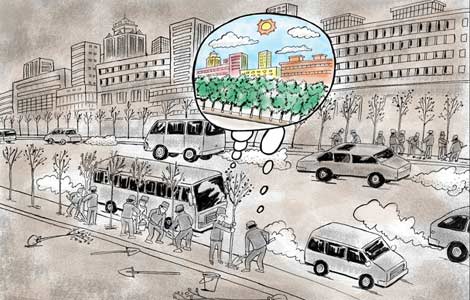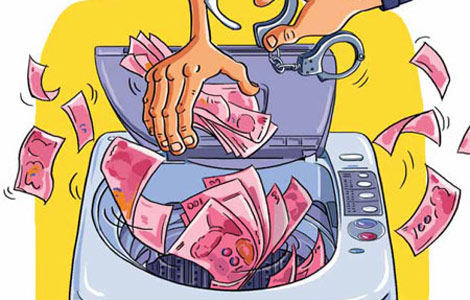World's largest cotton producer battles soil residue
Updated: 2014-01-27 14:54
(Xinhua)
|
|||||||||||
Glimmer of hope
What has brought Chinese cotton farmers a glimmer of hope is the "No 1 Central Document," the first national policy document of the year, issued by the Central Committee of the ruling Communist Party of China.
It said that China will start pilot restoration of contaminated farmland this year. A comprehensive plan to address prominent agricultural and environmental obstructions to sustainable development is also in the pipeline.
The document, which was issued on January 19, stresses promotion of high-standard plastic mulch and mulch recycling, which local agrotechnicans said is important for the ongoing battle against soil residue.
By the end of 2012, more than 50 million mu of farmland was covered with plastic mulch in Xinjiang, almost one-fourth of the country's total film-mulched land.
Under national standards implemented in the 1990s, qualified plastic mulch should be 0.008 mm thick, though thickness is allowed to vary by 0.003 mm.
Qin Xiaohui said that in reality, farmers only bought 0.005-mm mulch to save on costs. "But it's too thin for all of it to be recovered from the land after use," he added.
Xiao Fulin also admitted that he used the thinnest allowed mulch films to save on costs. As the mulch film is priced by weight, thinner films cost him 12 yuan ($1.98) less per mu.
To remedy the situation, some county governments started subsidizing farmers who use thicker mulch films in 2009.
The Yuli county government in the Tarim Basin, for instance, offers a subsidy of 15 yuan for each mu of land. However, because of the financial restraints of local government, the policy covers only 140,000 mu, while 700,000 mu of land goes unsubsidized.
Complaints over the use of mulch films did not wane, despite the subsidies.
Farmer Sun Wenchuan from Yuli County said it is not easy to collect the residue of thicker mulch films either.
"It's expensive and time-consuming," he said. "I have to pay 3,000 yuan for manual collection of residue in my fields."
Li Zhong, head of Yuli county's agricultural bureau, admitted battling residual mulch has been difficult due to lack of effective recycling tools. Less than half of the mulch film could be collected from the soil by machine.
Fortunately, XAAS researchers have invented a recycling machine that can collect more than 80 percent of mulch from cotton fields.
"We are raising funds to put the machine into trial use before it can be produced in large quantity," said Wang Xuenong, deputy head of the agricultural machinery research institute of XAAS.
He said that researchers are also testing the use of degradable mulch films.
The regional government has implemented a pollution abatement package for residual mulch, according to Nurmohamed Zunun, deputy head of the rural environmental protection and energy development department at the regional agricultural bureau.
"We will introduce incentive policies to help establish a platform where government, farmers, enterprises and the general public can work together to ensure optimal mulch use," he said.
Related Stories
China to modernize agriculture in new reform bid 2014-01-02 17:08
China arable land area above food security red-line 2013-12-30 13:20
China eyes 53m-hectare high-standard farmland by 2020 2013-11-26 20:57
China spends big on farmland improvement 2012-12-05 09:08
China to spend $6b on farmland improvement 2012-09-07 10:30
Today's Top News
More than 300 fall ill on Royal Caribbean ship
8.8% salary hikes expected for 2014
China turns the tables on gamblers
China takes measures against H7N9
Terrorists behind twin explosions in Xinjiang
2014 diplomatic strategy outlined at Davos
China reports another H10N8 case
Big events in the Sino-French relations
Hot Topics
Lunar probe , China growth forecasts, Emission rules get tougher, China seen through 'colored lens', International board,
Editor's Picks

|

|

|

|

|

|





